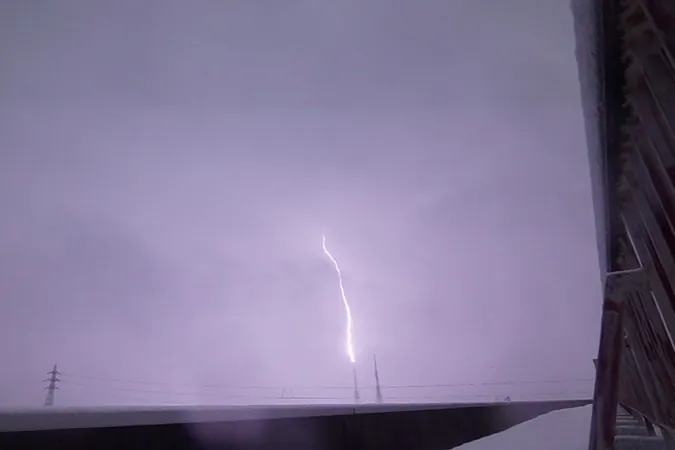
Researchers Capture Lightning Creating Stunning Gamma-Ray Flash
2025-05-21
Author: Emma
In a groundbreaking discovery, scientists have witnessed lightning unleashing a powerful burst of gamma radiation, marking a historic moment in the study of one of nature's most awe-inspiring phenomena.
Led by a team from the University of Osaka, this research sheds light on how thunderstorms can produce gamma-ray bursts—radiation typically associated with the universe's most extreme entities, such as black holes and neutron stars. Their findings were published today in Science Advances.
Using an advanced multi-sensor system in Kanazawa City, Japan, the researchers observed a unique lightning discharge divided into two paths: one originating from a thundercloud and another arcing up from a transmission tower on the ground. Remarkably, a gamma flash was detected just 31 microseconds before these two lightning discharges converged.
"Most TGFs (terrestrial gamma-ray flashes) have been detected from satellites, but these observations can often be limited," stated lead researcher Yuuki Wada. "Our ground-based observation allowed us to study TGFs in unprecedented detail."
TGFs were first detected from space in the 1990s, and although over two decades of research have been devoted to understanding them, their true origin remained a mystery. Recent studies published in Nature indicated unexpected gamma-ray 'glows' during tropical thunderstorms, hinting at a broader spectrum of radiation phenomena within thunderclouds, with TGFs being among the most intense bursts.
While previous airborne observations documented where and when TGFs happen, the Osaka team's work illuminates the precise conditions that trigger these flashes. In this case, the gamma burst emerged just before two lightning leaders made contact, suggesting a supercharged electric field accelerated electrons to nearly the speed of light, leading to this explosive radiation event.
Wada emphasized that ground-based observations like theirs are far more cost-effective than aerial studies, even if the latter offer fascinating insights. Unlike the lesser flashes discovered recently, this specific TGF was closely linked to a lightning strike, allowing for deeper analysis.
Co-author Harufumi Tsuchiya noted the significance of their findings, stating, "Though some mysteries still persist, our multi-sensor observations represent a world-first and bring us closer to unraveling the mechanisms behind these captivating bursts of radiation."









 Brasil (PT)
Brasil (PT)
 Canada (EN)
Canada (EN)
 Chile (ES)
Chile (ES)
 Česko (CS)
Česko (CS)
 대한민국 (KO)
대한민국 (KO)
 España (ES)
España (ES)
 France (FR)
France (FR)
 Hong Kong (EN)
Hong Kong (EN)
 Italia (IT)
Italia (IT)
 日本 (JA)
日本 (JA)
 Magyarország (HU)
Magyarország (HU)
 Norge (NO)
Norge (NO)
 Polska (PL)
Polska (PL)
 Schweiz (DE)
Schweiz (DE)
 Singapore (EN)
Singapore (EN)
 Sverige (SV)
Sverige (SV)
 Suomi (FI)
Suomi (FI)
 Türkiye (TR)
Türkiye (TR)
 الإمارات العربية المتحدة (AR)
الإمارات العربية المتحدة (AR)